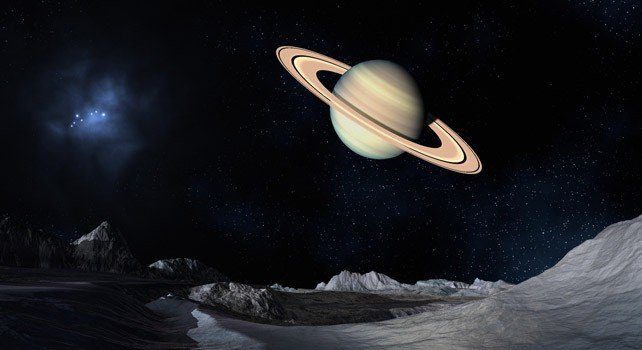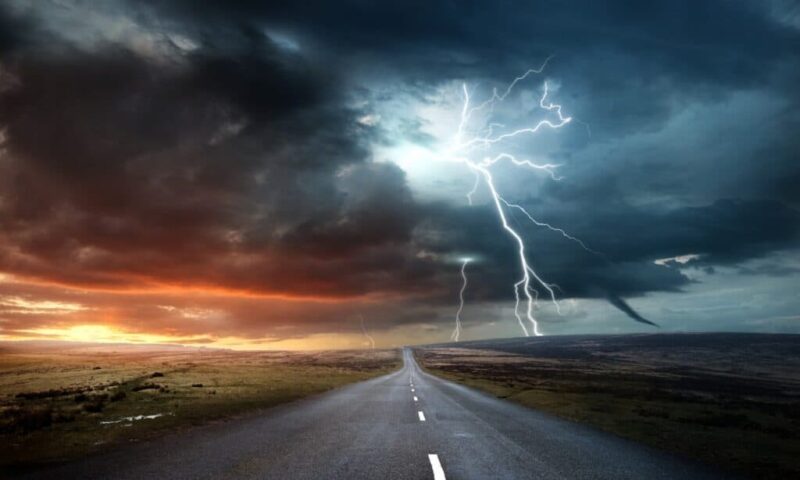Here you can find fun facts about Saturn, its moons, rings and atmosphere. Do you know that Saturn was a Roman god and was known to the Greeks as Cronus?
Known for its incredible ring system, Saturn is the sixth planet from the Sun and the second largest planet in our solar system. Like Jupiter, Saturn is a gas giant and consists of the same gases, including hydrogen, helium and methane.

Fun facts about Saturn
- Saturn is the most distant planet that can be seen with the eye. It is the fifth brightest object in the solar system, and it is also easy to explore it with binoculars or a small telescope.
- Saturn was known to the ancients, including the Babylonians and Far Eastern observers. It is named after the Roman god Saturn, and was known to the Greeks as Cronus.
- Saturn is a little bit flat planet. Its polar diameter is 90% of the equatorial diameter, this is due to low density and rapid rotation. Saturn revolves around its axis every 10 hours and 34 minutes, making it the second shortest day of all the planets in the solar system.
- The planet Saturn revolves around the Sun every 29.4 Earth years. Its slow movement resulted in its name “Lubadsagush” by the ancient Assyrians. The name means “the oldest of the old.”
- The upper atmosphere of Saturn is divided into bands of clouds. The upper layers are mostly ammonia ice. Beneath them, the clouds are mostly water ice. Below – layers of cold mixtures of hydrogen and sulfur with ice.
- Saturn has oval-shaped storms similar to Jupiter. The area around the North Pole has a hexagonal shape of clouds. The planet also has a vortex over its south pole, resembling a hurricane-like storm.
- The planet Saturn consists mostly of hydrogen. It is stacked in layers that become denser the farther you move to the center of the planet. Eventually, deep inside, the hydrogen becomes metallic.
- Saturn has the widest rings in the solar system. Saturn’s rings consist largely of pieces of ice and a small amount of carbon dust. The rings are located at the distance of more than 120,700 km from the planet, but extremely thin: only about 20 meters thick.
- Saturn has 150 large small moons. The largest moons are Titan and Rhea. Enceladus seems to have an ocean beneath its frozen surface.
- Titan is a moon with a complex and dense atmosphere rich in nitrogen. It consists mainly of water ice and rocks. On its frozen surface there are lakes of liquid methane and landscapes covered with frozen nitrogen. Planetary scientists believe Titan is a possible place for extraterrestrial life.
- Four spaceships visited Saturn. Pioneer 11 , Voyager 1 and 2 , as well as the Cassini-Huygens mission explored the planet. Cassini orbited Saturn from July 2004 to September 2017, sending back a lot of data about the planet, its moons and rings.
- Saturn has more moons than any other planet in the solar system. In 2019, 20 new satellites were discovered, which made a total of 82. That’s 3 more than Jupiter has.

Rings of Saturn
Speaking of fun facts about Saturn, we must mention the rings of Saturn.
Although all gas giants in our solar system have rings, none of them is as vast and distinctive as Saturn.
How the pearls are formed? Natural and artificial pearls
Saturn’s rings were discovered by Galileo Galilei in 1610, who observed them with a telescope. The first close-up image of the rings was taken by the Pioneer 11 spacecraft, which flew over Saturn on September 1, 1971.
Saturn’s rings consist of billions of particles the size from tiny grains of dust to objects the size of a mountain. They consist of pieces of ice and rocks that are believed to have originated from amethy comets or even moons that disintegrated before they reached the planet.
Saturn’s rings are divided into 7 groups, named alphabetically in the order of their discovery (Outside of Saturn; D, C, B, A, F, G and E).
Exploring the Mysteries of the Galactic Year: A Beginner’s Guide
Atmosphere of the planet Saturn
Saturn’s atmosphere consists mainly of hydrogen (96%) and helium (3%) with traces of other substances such as methane, ammonia, acetylene, ethane, propane and phosphine.

Winds in the upper atmosphere of Saturn can reach speed of 500 meters per second, which, combined with the heat rising from inside the planet, causes the appearance of yellow and gold stripes.



